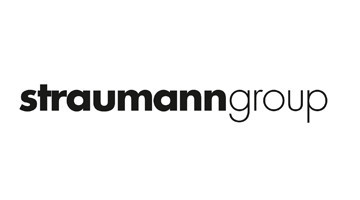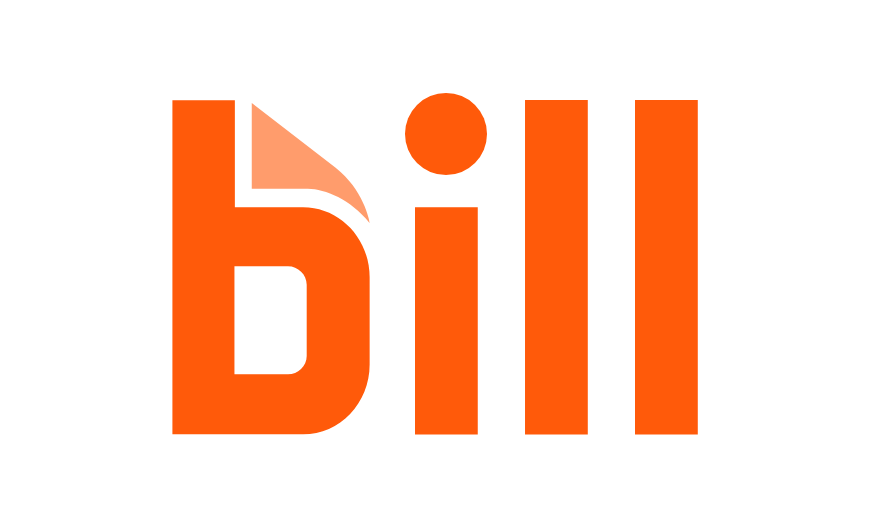One of the faster growing markets to adopt 3D printing technology is the healthcare industry, which has been rapidly developing new medical applications at an astounding rate. What once was just a small blip on the 3D printing radar has grown into its own industry within an industry, and looks to continue to expand exponentially over the next four years. We’ve already seen some amazing developments over the last few years in bioprinting, prosthesis manufacturing and customized medical implants.
A new market research report released by IndustryARC breaks down the medical 3D printing industry into several categories and subcategories, including technologies typically used like fused deposition modelling (FDM), laser beam melting (LBM), electron beam melting (EBM) and Stereolithography (SLA). There is also an entire section dedicated to materials used in the healthcare industry, including metals, resins and biological materials like cells. The figures have also been broken down by geography and applications, like medical implants and tissue bioprinting.
As of 2014 the global 3D printing healthcare market recorded revenues of $487 million and IndustryARC expects it to grow by 18.3% annually until the year 2020. That rapid expansion is primarily being driven by the industry increasing the amount of 3D printing technologies being adapted for medical use, and is spread out among several applications. The healthcare industry has seen significant growth in areas as diverse as dental applications, medical implants and drug manufacturing, with materials used in these applications varying widely. Dental implants mostly use metal materials and ceramics to 3D print dental crowns, while the medical research industry has its own variety of advanced biomaterials.
In 2014, medical 3D printing materials in healthcare alone had revenues of $284.7 million, and are actually estimated to grow at a faster compound annual growth rate than the rest of the industry. Medical and dental 3D printing materials are predicted to grow at a rate of 19.1% until 2020. Commonly used 3D printing materials for healthcare applications include plastics, metals, ceramics, donor cells, bone cement and various biomaterials. Metal powders and biomaterials are still extremely expensive, but technology improvements are reducing the costs associated with metal, and biomaterials are still in the research stage. They are expected to drop in price as they become a more prominent material used in the healthcare industry.
One of the driving forces of growth for the medical 3D printing industry is the growing demand for patient-specific products in orthopedics and maxillofacial surgery. Additionally, advances in tissue engineering for 3D bioprinting are ongoing. IndustryARC expects that tissues generated by bioprinting will soon be available as transplantable organs and tissue in the near future. The reduction in 3D printing technology costs are also being predicted based on the growing demand for government subsidy programs and medical bioprinting research grants.'
Currently North America is the leading consumer of 3D printing technology in the healthcare industry and accounts for 39.7% of the entire market share in 2014. Europe is the second major market for medical 3D printing applications, followed by the Asia-Pacific (APAC) market, both together accounting for 37% of the market in 2014. While the market in APAC is considerably smaller than in North America, as with other 3D printing market segments the Asia-Pacific market is growing at a faster rate that in Europe or the Americas.
The major companies contributing to the growth of healthcare and medical 3D printing applications include 3D Systems, Stratasys, EnvisionTEC, Invetech, Digilab, MicroFab Technologies, nScrypt and Tevido BioDevices.
Source: https://3dprint.com/137461/3d-printing-healthcare-market/
LONDON, UK: The global dental 3-D printing market is expected to grow to US$9.7 billion by 2025, according to a new report by Grand View Research. The ...
NORTHBROOK, Ill., US: By 2028, the value of the dental 3D-printing market is expected to surge to US$6.7 billion, from US$3.0 billion currently—a ...
ALBANY, N.Y., U.S.: A recent study, commissioned by the American Academy of Pediatric Dentistry (AAPD), has evaluated the adequacy of the supply of ...
GENEVA, Switzerland: For 120 years, FDI World Dental Federation has focused its mission on the goal of improving oral health worldwide. In a recently ...
LONDON, UK: According to a new report from data and analytics company GlobalData, the global dental implant market is expected to reach US$5.9 billion by ...
SAN FRANCISCO, US: Advancements in 3D-scanning technology, thermoforming materials and 3D printing have paved the way for the clear aligner market to be ...
XI’AN, China: Dental implantology is no longer just about milling. Technological leaps in additive manufacturing have hastened both the pace at which ...
PERUGIA, Italy: In recent years, the landscape of dental prosthesis fabrication has seen a significant shift with the advent of additive manufacturing ...
COLOGNE, Germany: Today, Dental Tribune International hosted the founding meeting of the International Academy for Dental 3D Printing (iad3Dp). The goal of ...
VANCOUVER, Canada: When the global pandemic hit, dental treatments such as implant therapy were cancelled or rescheduled. This affected not only dental ...
Live webinar
Mon. 22 April 2024
10:00 am EST (New York)
Prof. Dr. Erdem Kilic, Prof. Dr. Kerem Kilic
Live webinar
Tue. 23 April 2024
1:00 pm EST (New York)
Live webinar
Wed. 24 April 2024
8:00 am EST (New York)
Dr. Yin Ci Lee BDS (PIDC), MFDS RCS, DClinDent Prosthodontics, Dr. Ghida Lawand BDS, MSc, Dr. Oon Take Yeoh, Dr. Edward Chaoho Chien DDS, DScD
Live webinar
Wed. 24 April 2024
1:00 pm EST (New York)
Live webinar
Fri. 26 April 2024
12:00 pm EST (New York)
Live webinar
Mon. 29 April 2024
12:30 pm EST (New York)
Prof. Roland Frankenberger Univ.-Prof. Dr. med. dent.
Live webinar
Tue. 30 April 2024
1:00 pm EST (New York)



 Austria / Österreich
Austria / Österreich
 Bosnia and Herzegovina / Босна и Херцеговина
Bosnia and Herzegovina / Босна и Херцеговина
 Bulgaria / България
Bulgaria / България
 Croatia / Hrvatska
Croatia / Hrvatska
 Czech Republic & Slovakia / Česká republika & Slovensko
Czech Republic & Slovakia / Česká republika & Slovensko
 France / France
France / France
 Germany / Deutschland
Germany / Deutschland
 Greece / ΕΛΛΑΔΑ
Greece / ΕΛΛΑΔΑ
 Italy / Italia
Italy / Italia
 Netherlands / Nederland
Netherlands / Nederland
 Nordic / Nordic
Nordic / Nordic
 Poland / Polska
Poland / Polska
 Portugal / Portugal
Portugal / Portugal
 Romania & Moldova / România & Moldova
Romania & Moldova / România & Moldova
 Slovenia / Slovenija
Slovenia / Slovenija
 Serbia & Montenegro / Србија и Црна Гора
Serbia & Montenegro / Србија и Црна Гора
 Spain / España
Spain / España
 Switzerland / Schweiz
Switzerland / Schweiz
 Turkey / Türkiye
Turkey / Türkiye
 UK & Ireland / UK & Ireland
UK & Ireland / UK & Ireland
 Brazil / Brasil
Brazil / Brasil
 Canada / Canada
Canada / Canada
 Latin America / Latinoamérica
Latin America / Latinoamérica
 USA / USA
USA / USA
 China / 中国
China / 中国
 India / भारत गणराज्य
India / भारत गणराज्य
 Japan / 日本
Japan / 日本
 Pakistan / Pākistān
Pakistan / Pākistān
 Vietnam / Việt Nam
Vietnam / Việt Nam
 ASEAN / ASEAN
ASEAN / ASEAN
 Israel / מְדִינַת יִשְׂרָאֵל
Israel / מְדִינַת יִשְׂרָאֵל
 Algeria, Morocco & Tunisia / الجزائر والمغرب وتونس
Algeria, Morocco & Tunisia / الجزائر والمغرب وتونس
 Middle East / Middle East
Middle East / Middle East
:sharpen(level=0):output(format=jpeg)/up/dt/2024/04/IDEM-Singapore-2024-Masterclass-Alleman_1.jpg)
:sharpen(level=0):output(format=jpeg)/up/dt/2024/04/IDEM-Singapore_2_Asiga.jpg)
:sharpen(level=0):output(format=jpeg)/up/dt/2024/04/IDEM-Singapore-2024_5_Invisalign.jpg)
:sharpen(level=0):output(format=jpeg)/up/dt/2024/04/IDEM-Singapore-2024-Matthias-Kupper.jpg)
:sharpen(level=0):output(format=jpeg)/up/dt/2024/04/Dental-surgeons-have-an-important-role.jpg)












:sharpen(level=0):output(format=png)/up/dt/2021/02/logo-gc-int.png)
:sharpen(level=0):output(format=png)/up/dt/2013/01/Amann-Girrbach_Logo_SZ_RGB_neg.png)
:sharpen(level=0):output(format=jpeg)/up/dt/2010/02/logo-3DISC-et-baseline-fond-blanc.jpg)
:sharpen(level=0):output(format=png)/up/dt/2022/01/HASSBIO_Logo_horizontal.png)
:sharpen(level=0):output(format=png)/up/dt/2023/08/Neoss_Logo_new.png)
:sharpen(level=0):output(format=png)/up/dt/2014/02/Du%CC%88rr_Dental.png)
:sharpen(level=0):output(format=jpeg)/up/dt/2017/01/6ac1212f648dddef5be557f71687ea4f.jpg)

:sharpen(level=0):output(format=jpeg)/up/dt/2024/04/IDEM-Singapore-2024-Masterclass-Alleman_1.jpg)
:sharpen(level=0):output(format=gif)/wp-content/themes/dt/images/dt-user.gif)
:sharpen(level=0):output(format=jpeg)/up/dt/2021/08/placeholder.jpg)
:sharpen(level=0):output(format=jpeg)/up/dt/2023/10/Leading-market-research-firm-predicts-massive-growth-for-dental-3D-printing-market.jpg)
:sharpen(level=0):output(format=jpeg)/up/dt/2019/08/Pediatric-Dentists-to-Grow-by-60-in-the-Next-Decade.jpg)
:sharpen(level=0):output(format=jpeg)/up/dt/2021/01/FDI-shares-vision-on-how-to-deliver-oral-health-to-all-until-2030_780-x-439.jpg)
:sharpen(level=0):output(format=jpeg)/up/dt/2019/04/dental-implant-market.jpg)
:sharpen(level=0):output(format=jpeg)/up/dt/2022/04/Clear-aligners-market-expected-to-see-substantial-growth.jpg)
:sharpen(level=0):output(format=jpeg)/up/dt/2023/09/Researchers-create-go-to-guide-for-all-things-3D-printing-in-implantology.jpg)
:sharpen(level=0):output(format=jpeg)/up/dt/2024/04/Italian-researchers-test-11-new-3D-printing-materials.jpg)
:sharpen(level=0):output(format=jpeg)/up/dt/2023/03/Leadership-in-3D-printing-Academy-for-Dental-3D-Printing-introduced-at-IDS_1.jpg)
:sharpen(level=0):output(format=jpeg)/up/dt/2022/01/Asia-Pacific-implant-and-abutment-market-predicted-to-grow_new.jpg)





:sharpen(level=0):output(format=jpeg)/up/dt/2024/04/IDEM-Singapore-2024-Masterclass-Alleman_1.jpg)
:sharpen(level=0):output(format=jpeg)/up/dt/2024/04/IDEM-Singapore_2_Asiga.jpg)
:sharpen(level=0):output(format=jpeg)/up/dt/2024/04/IDEM-Singapore-2024_5_Invisalign.jpg)
:sharpen(level=0):output(format=jpeg)/wp-content/themes/dt/images/3dprinting-banner.jpg)
:sharpen(level=0):output(format=jpeg)/wp-content/themes/dt/images/aligners-banner.jpg)
:sharpen(level=0):output(format=jpeg)/wp-content/themes/dt/images/covid-banner.jpg)
:sharpen(level=0):output(format=jpeg)/wp-content/themes/dt/images/roots-banner-2024.jpg)
To post a reply please login or register